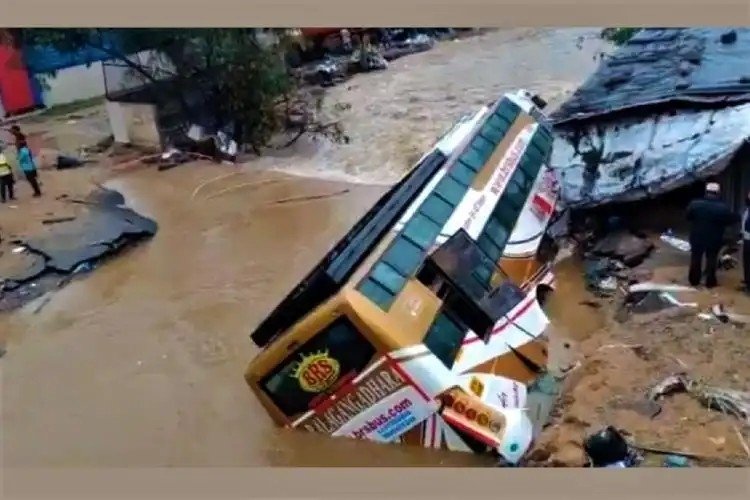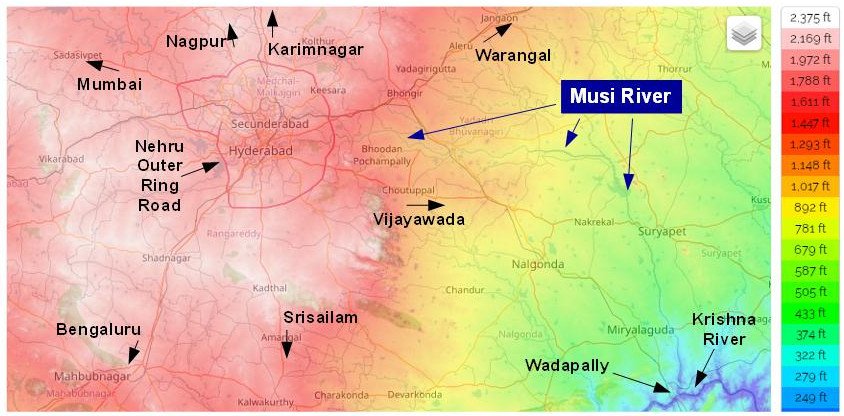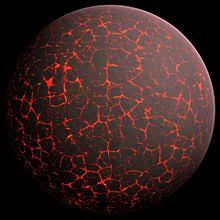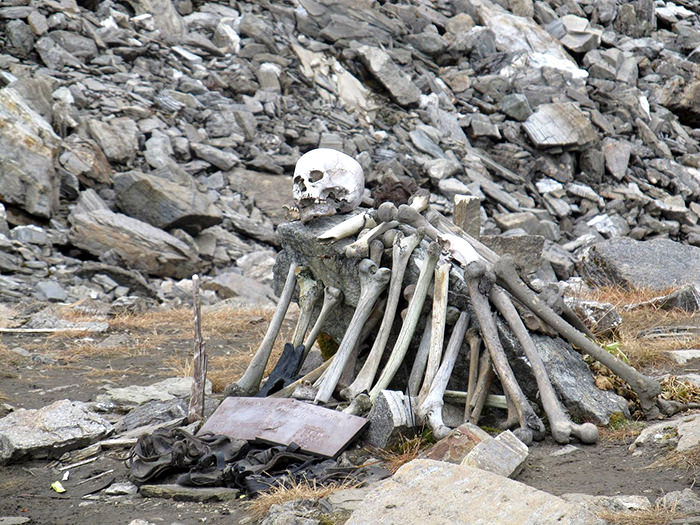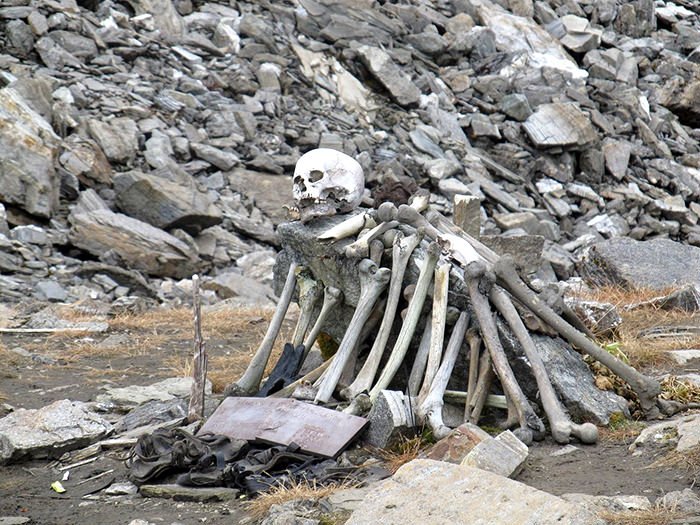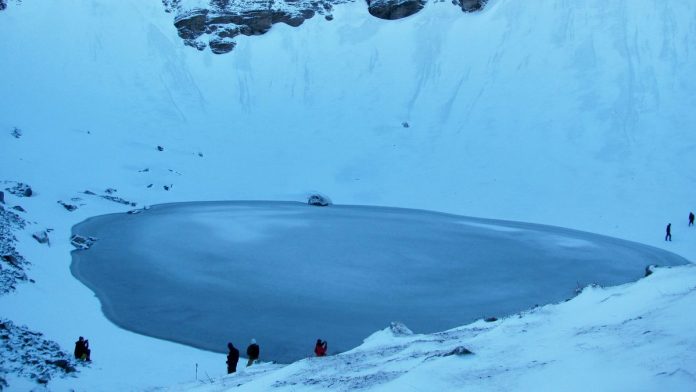
2/60
The turn of the 19th century saw a renaissance in unearthing ancient history of India.
The British had been around for 200 years by then and a lot was known about Mughal history, Muslim Sultanates and contemporary Hindu kingdoms.
The turn of the 19th century saw a renaissance in unearthing ancient history of India.
The British had been around for 200 years by then and a lot was known about Mughal history, Muslim Sultanates and contemporary Hindu kingdoms.
3/60
But systematic knowledge of ancient, pre-Muslim Indian history was scant, and was derived mostly from the Epics, folk stories and guesses.
This changed in 1794, when the Asiatic Society of Bengal was set up in Calcutta by William Jones.
But systematic knowledge of ancient, pre-Muslim Indian history was scant, and was derived mostly from the Epics, folk stories and guesses.
This changed in 1794, when the Asiatic Society of Bengal was set up in Calcutta by William Jones.
4/60
Jones was a philologist and studied languages. Setting up the Society allowed him to pursue his interest in studying Hindu culture and learn more about the role of Sanskrit in Indo Aryan languages.
Jones was a philologist and studied languages. Setting up the Society allowed him to pursue his interest in studying Hindu culture and learn more about the role of Sanskrit in Indo Aryan languages.
5/60
The Society soon became a focal point for gathering information related to India's past.
Amateur researchers, including British officers and soldiers on duty, started sending historical information that they saw or heard.
The Society soon became a focal point for gathering information related to India's past.
Amateur researchers, including British officers and soldiers on duty, started sending historical information that they saw or heard.
6/60
Jones' quest to learn about India's pre-Muslim history was hampered by the lack of historical texts.
The closest chronology of kings he could get was from the Puranas, and from literary and historical texts like Vishakhadatta's Mudrarakshasa and Kalhan's Rajataringini.
Jones' quest to learn about India's pre-Muslim history was hampered by the lack of historical texts.
The closest chronology of kings he could get was from the Puranas, and from literary and historical texts like Vishakhadatta's Mudrarakshasa and Kalhan's Rajataringini.
7/60
The chronology in the Puranas starts with Manu, the son of Brahma. Then there were the Suryavanshi and Chandravanshi kings, whose lineages ruled several “Janapadas” in Jambudwipa (India).
A prominent Janapada was Magadh, which Jones knew as being in present day Bihar.
The chronology in the Puranas starts with Manu, the son of Brahma. Then there were the Suryavanshi and Chandravanshi kings, whose lineages ruled several “Janapadas” in Jambudwipa (India).
A prominent Janapada was Magadh, which Jones knew as being in present day Bihar.
8/60
Puranas record that Magadh was established by Brihdrath. His dynasty was followed by other dynasties such as Pradotyas, Haryankas, Shishungas and Nagas.
And the Nagas were overthrown by a Brahmin, Chanakya, who anointed his Maurya protege Chandragupta, as the ruler.
Puranas record that Magadh was established by Brihdrath. His dynasty was followed by other dynasties such as Pradotyas, Haryankas, Shishungas and Nagas.
And the Nagas were overthrown by a Brahmin, Chanakya, who anointed his Maurya protege Chandragupta, as the ruler.
9/60
Chanakya is also the central character of Vishakhadatta's play Mudrarakshasa, written somewhere between the 4th and 8th century CE.
The play is historical fiction – and throws light on the founding of the Mauryan Empire.
Chanakya is also the central character of Vishakhadatta's play Mudrarakshasa, written somewhere between the 4th and 8th century CE.
The play is historical fiction – and throws light on the founding of the Mauryan Empire.
10/60
The Mauryas ruled for 137 years.
Chandragupta's son Bimbisara was followed by Ashokvardhan (for some reason he was called “The Great” in the Puranas).
The dynasty ended when the 10th Mauryan king was killed by his Brahmin general Pushyamitra Shunga.
The Mauryas ruled for 137 years.
Chandragupta's son Bimbisara was followed by Ashokvardhan (for some reason he was called “The Great” in the Puranas).
The dynasty ended when the 10th Mauryan king was killed by his Brahmin general Pushyamitra Shunga.
11/60
Meanwhile Jones was also mulling over another fact - though Buddha gave his message in India there were few Buddhists around in India in Jones' time.
This was despite evidence of there being several Buddhist kings in the past.
Meanwhile Jones was also mulling over another fact - though Buddha gave his message in India there were few Buddhists around in India in Jones' time.
This was despite evidence of there being several Buddhist kings in the past.
12/60
Historical texts like the 12th c Rajatarangini by Kalhan confirmed the existence of Buddhist kings.
Another remarkable fact was the unmistakable antagonism that Brahmins seemed to have towards Buddha even in Jones' time, though they accepted Buddha as an avtar of Vishnu.
Historical texts like the 12th c Rajatarangini by Kalhan confirmed the existence of Buddhist kings.
Another remarkable fact was the unmistakable antagonism that Brahmins seemed to have towards Buddha even in Jones' time, though they accepted Buddha as an avtar of Vishnu.
13/60
This was a puzzle that could be solved only with more information.
Fortunately a new information stream was getting added to the linguistic, literary and religious streams already flowing to the Asiatic Society. This was the stream of archaeological evidence.
This was a puzzle that could be solved only with more information.
Fortunately a new information stream was getting added to the linguistic, literary and religious streams already flowing to the Asiatic Society. This was the stream of archaeological evidence.
14/60
Officers of the East India Company administration were spreading to all corners of the country and reporting archaeological finds.
The caves at Ajanta and Ellora were found. Digging for construction projects was unearthing buried ruins.
Officers of the East India Company administration were spreading to all corners of the country and reporting archaeological finds.
The caves at Ajanta and Ellora were found. Digging for construction projects was unearthing buried ruins.
15/60
But the most interesting discoveries were inscriptions found engraved at several places, on pillars, rocks and in caves.
Some inscriptions were in recognisable Nagari script.
Many more, however, were in an older script which even Brahmins tapped by Jones could not read.
But the most interesting discoveries were inscriptions found engraved at several places, on pillars, rocks and in caves.
Some inscriptions were in recognisable Nagari script.
Many more, however, were in an older script which even Brahmins tapped by Jones could not read.
16/60
The Brahmins called this script Brahmi – the script given by Lord Brahma.
Brahmi inscriptions were reported from Andhra, Bengal and Delhi.
Inscriptions were even reported from Afghanistan. However these were not in regular Brahmi, but in a script similar to it.
The Brahmins called this script Brahmi – the script given by Lord Brahma.
Brahmi inscriptions were reported from Andhra, Bengal and Delhi.
Inscriptions were even reported from Afghanistan. However these were not in regular Brahmi, but in a script similar to it.
17/60
Of all the inscriptions the ones on pillars were the most intriguing -because many of the pillars seemed to have been quarried from the same rock. This meant that they were made in “factories” and transported and installed at various places.
Why? For what purpose? By whom?
Of all the inscriptions the ones on pillars were the most intriguing -because many of the pillars seemed to have been quarried from the same rock. This meant that they were made in “factories” and transported and installed at various places.
Why? For what purpose? By whom?
18/60
One of the well known inscribed pillars was the “Firoz Shah Lat” in Delhi.
Sultan Firoz Shah Tughlaq had recorded that he found this northwest of Delhi and had it transported to Delhi where he installed it in the “kotla” - a fortified city – which he was building.
One of the well known inscribed pillars was the “Firoz Shah Lat” in Delhi.
Sultan Firoz Shah Tughlaq had recorded that he found this northwest of Delhi and had it transported to Delhi where he installed it in the “kotla” - a fortified city – which he was building.
19/60
Another discovery was made in 1818.
A detachment of East India Company troops was camped below a hill northeast of Bhopal near Bhilsa (today's Vidisha).
On climbing the hill next morning they found well preserved structures of a kind known as “Topes” - or “Stupas”.
Another discovery was made in 1818.
A detachment of East India Company troops was camped below a hill northeast of Bhopal near Bhilsa (today's Vidisha).
On climbing the hill next morning they found well preserved structures of a kind known as “Topes” - or “Stupas”.
20/60
Topes hold Buddha's Relics.
The largest Tope found by the troops had a hemispherical dome surrounded by a pathway enclosed in a railing. The pathway had gateways at the four cardinal points and were covered with exquisite sculptures.
The name of the hill was Sanchi.
Topes hold Buddha's Relics.
The largest Tope found by the troops had a hemispherical dome surrounded by a pathway enclosed in a railing. The pathway had gateways at the four cardinal points and were covered with exquisite sculptures.
The name of the hill was Sanchi.
21/60
The same year another officer of the Company discovered a rock near Bhubaneshwar which had a 17-line inscription carved on it.
This inscription was also in the same script as the one on “Firoz Shah's Lat” in Delhi.
The same year another officer of the Company discovered a rock near Bhubaneshwar which had a 17-line inscription carved on it.
This inscription was also in the same script as the one on “Firoz Shah's Lat” in Delhi.
22/60
Another inscription was found on a rock in Girnar in western India. Here the inscription covered the entire face of the rock.
Archaeological data was piling up. But the mystery of “who” and “why” remained unsolved.
To solve it, Brahmi had to be deciphered.
Another inscription was found on a rock in Girnar in western India. Here the inscription covered the entire face of the rock.
Archaeological data was piling up. But the mystery of “who” and “why” remained unsolved.
To solve it, Brahmi had to be deciphered.
23/60
Enter John Prinsep.
An “assay master” at the Bengal Mint, his day job was to ensure that alloys used in making coins were of the right composition.
But besides his formal job he was an artist, numismatist and metallurgist.
And he was imbued in the scientific method.
Enter John Prinsep.
An “assay master” at the Bengal Mint, his day job was to ensure that alloys used in making coins were of the right composition.
But besides his formal job he was an artist, numismatist and metallurgist.
And he was imbued in the scientific method.
24/60
Prinsep's interests drew him to Asiatic Society, where he took on editorship of the Society's Journal.
His first act as editor was to send out an appeal to everyone, to send historical finds for publication in the Journal. His appeal drew immediate and plentiful response.
Prinsep's interests drew him to Asiatic Society, where he took on editorship of the Society's Journal.
His first act as editor was to send out an appeal to everyone, to send historical finds for publication in the Journal. His appeal drew immediate and plentiful response.
25/60
Meanwhile Prinsep had been working on coins from Afghanistan and further west. Many of these coins had inscriptions in a script similar to Brahmi, but written from right to left.
This script would later be called Kharoshthi.
Meanwhile Prinsep had been working on coins from Afghanistan and further west. Many of these coins had inscriptions in a script similar to Brahmi, but written from right to left.
This script would later be called Kharoshthi.
26/60
But Indian philology's “Eureka!” moment came in 1837.
Prinsep had been working on copies of inscriptions engraved on the crosspieces of the gates at Sanchi which had been sent to him. (see picture)
But Indian philology's “Eureka!” moment came in 1837.
Prinsep had been working on copies of inscriptions engraved on the crosspieces of the gates at Sanchi which had been sent to him. (see picture)

27/60
Most of these were very short inscriptions, and ended with the same two characters – a snake like squiggle containing 6 segments, and an inverted T with a dot beside it (see picture).
Most of these were very short inscriptions, and ended with the same two characters – a snake like squiggle containing 6 segments, and an inverted T with a dot beside it (see picture).

28/60
Prinsep conjectured that the location of these inscriptions (on the gates of a Stupa), their brevity and their repetitive use, all indicated that they may describe donations from devotees.
As conjectures go this was a leap of faith. It hit the bulls eye.
Prinsep conjectured that the location of these inscriptions (on the gates of a Stupa), their brevity and their repetitive use, all indicated that they may describe donations from devotees.
As conjectures go this was a leap of faith. It hit the bulls eye.
29/60
He saw that in many cases these two characters were preceded by a third symbol which looked like a distorted hook (picture).
Luckily he had seen this character often on coins, and had decoded it as Sanskrit “sya”, or Pali “ssa” meaning “Of”.
He saw that in many cases these two characters were preceded by a third symbol which looked like a distorted hook (picture).
Luckily he had seen this character often on coins, and had decoded it as Sanskrit “sya”, or Pali “ssa” meaning “Of”.

30/60
This meant that the inscriptions must be of the form “so-and-so's gift”
And so the two repeating characters after the “Of” must be the word for gift - “dana” or “danam”.
The code had been broken.
This meant that the inscriptions must be of the form “so-and-so's gift”
And so the two repeating characters after the “Of” must be the word for gift - “dana” or “danam”.
The code had been broken.
31/60
Prinsep had observed that most pillar and rock inscriptions started with the same 15 characters (see picture).
Applying the newly broken code to these 15 characters Prinsep deciphered them as “Devanamapiya piyadasi laja hevam aha”.
Prinsep had observed that most pillar and rock inscriptions started with the same 15 characters (see picture).
Applying the newly broken code to these 15 characters Prinsep deciphered them as “Devanamapiya piyadasi laja hevam aha”.
32/60
The word “Laja” initially threw him off, till he realised it was a corruption of “Raja”, or King.
The translation therefore is: “Thus spake King Piyadasi, Beloved-of-the-Gods”.
This was a hair raising moment, when an ancient king seemed to be directly speaking!
The word “Laja” initially threw him off, till he realised it was a corruption of “Raja”, or King.
The translation therefore is: “Thus spake King Piyadasi, Beloved-of-the-Gods”.
This was a hair raising moment, when an ancient king seemed to be directly speaking!
33/60
Prinsep first thought these were the commandments of Buddha himself.
But then he saw phrases such as “In the 27th year of my anointment”.
This had to be an Emperor whose domain covered the entire subcontinent (for his inscriptions were found all over)!
Prinsep first thought these were the commandments of Buddha himself.
But then he saw phrases such as “In the 27th year of my anointment”.
This had to be an Emperor whose domain covered the entire subcontinent (for his inscriptions were found all over)!
34/60
And what was this Emperor saying?
The messages in the the inscriptions were stunning! These were the Emperor's Edicts, and they covered a bewildering variety of topics.
There were commands to citizens and officers. Admonitions to live righteously...
And what was this Emperor saying?
The messages in the the inscriptions were stunning! These were the Emperor's Edicts, and they covered a bewildering variety of topics.
There were commands to citizens and officers. Admonitions to live righteously...
35/60
.. Descriptions of welfare works. Reminders of citizens' rights!
So who was Emperor Piyadasi?
And why was his name not mentioned in the Puranas and epics, when it was clear that he probably ruled the world's largest geographical area in his time?
.. Descriptions of welfare works. Reminders of citizens' rights!
So who was Emperor Piyadasi?
And why was his name not mentioned in the Puranas and epics, when it was clear that he probably ruled the world's largest geographical area in his time?
36/60
This mystery was resolved using information which came to Prinsep from Ceylon.
William Fox, a missionary, and George Turnour, a British officer, had independently of each other, been researching how and when Buddhism reached the island of Ceylon.
This mystery was resolved using information which came to Prinsep from Ceylon.
William Fox, a missionary, and George Turnour, a British officer, had independently of each other, been researching how and when Buddhism reached the island of Ceylon.
37/60
Fox's work was published in England, but was ignored at that time.
Turnour however, wrote to Prinsep.
He had discovered that Buddhism came to Lanka because of a strong connection between a Lankan king – Petissa the second – and a king of Jambudwipa (India).
Fox's work was published in England, but was ignored at that time.
Turnour however, wrote to Prinsep.
He had discovered that Buddhism came to Lanka because of a strong connection between a Lankan king – Petissa the second – and a king of Jambudwipa (India).
38/60
According to Lankan chronicles the Jambudwipa king was named Darmasoca, also called Piyadasee.
The chronicles further told that Darmasoca's grandfather was Chadragutto, and described the role of Chanakya in bringing him to power.
According to Lankan chronicles the Jambudwipa king was named Darmasoca, also called Piyadasee.
The chronicles further told that Darmasoca's grandfather was Chadragutto, and described the role of Chanakya in bringing him to power.
39/60
The chronicles said that Darmasoca ruled for 44 years, and that he converted to Buddhism four years after his coronation.
He made his son “Mihindu” and daughter “Sangamittrah” priest and priestess, and sent them to Lanka for propagating Shakya Muni's (Buddha's) message.
The chronicles said that Darmasoca ruled for 44 years, and that he converted to Buddhism four years after his coronation.
He made his son “Mihindu” and daughter “Sangamittrah” priest and priestess, and sent them to Lanka for propagating Shakya Muni's (Buddha's) message.
40/60
The chronicles also said that Darmasoca compiled the “Law of Buddha”, and sent a bough of the Bodhi Tree to Lanka.
That after the death of his wife he married again, and that his second wife, Tissahraccah, tried to kill the Bodhi Tree.
The chronicles also said that Darmasoca compiled the “Law of Buddha”, and sent a bough of the Bodhi Tree to Lanka.
That after the death of his wife he married again, and that his second wife, Tissahraccah, tried to kill the Bodhi Tree.
41/60
This account matched with another text on Ashoka (from the 4th century CE) – the Ashokavadana.
It seemed therefore, that Darmasoca was none other than Bindusara's son and Chandragupta's grandson – Ashoka, also called Piyadasee.
This account matched with another text on Ashoka (from the 4th century CE) – the Ashokavadana.
It seemed therefore, that Darmasoca was none other than Bindusara's son and Chandragupta's grandson – Ashoka, also called Piyadasee.
42/60
The records left by travellers such as Faxian and Xuanzang were also discovered in the 19th century.
They confirmed many of the conjectures about Ashoka, and also filled in some missing links.
The records left by travellers such as Faxian and Xuanzang were also discovered in the 19th century.
They confirmed many of the conjectures about Ashoka, and also filled in some missing links.
43/60
This then is the story that emerged of Ashoka:
After studying at Taxila Chanakya goes to Pataliputra hoping to get a place in King Dhana Nanda's court. However he is forced to flee for his life, and vows revenge. He flees to the northwest where he finds Chandragupta.
This then is the story that emerged of Ashoka:
After studying at Taxila Chanakya goes to Pataliputra hoping to get a place in King Dhana Nanda's court. However he is forced to flee for his life, and vows revenge. He flees to the northwest where he finds Chandragupta.
44/60
Chandragupta is likely to have been from a tribe who first confronted, and then assisted, Alexander.
Greek history records a Sandrogottos (Chandragupta) who fought his way to power.
Chandragupta is likely to have been from a tribe who first confronted, and then assisted, Alexander.
Greek history records a Sandrogottos (Chandragupta) who fought his way to power.
45/60
Chanakya took his revenge on Nanda when he guided Chandraguptra to victory over Dhana Nanda and made him king of Magadh.
After Alexander went back, Chandragupta annexed many western territories and married the daughter of Seleucus Nicator, the Greek satrap of the area.
Chanakya took his revenge on Nanda when he guided Chandraguptra to victory over Dhana Nanda and made him king of Magadh.
After Alexander went back, Chandragupta annexed many western territories and married the daughter of Seleucus Nicator, the Greek satrap of the area.
46/60
The Greek historian Megasthenes records Mauryan society under Chandragupta as caste dominated, but disciplined and well administered.
This administration required a script in which commands in the spoken language – Prakrit- could be sent kingdom-wide.
The Greek historian Megasthenes records Mauryan society under Chandragupta as caste dominated, but disciplined and well administered.
This administration required a script in which commands in the spoken language – Prakrit- could be sent kingdom-wide.
47/60
Perhaps Aramaic script (from what today is Syria) was tried out, but it did not have many of the sounds used in spoken Prakrit.
Kharoshti was perhaps then invented, retaining the right to left scheme of Aramaic. Brahmi came later – perhaps invented during Ashoka's time.
Perhaps Aramaic script (from what today is Syria) was tried out, but it did not have many of the sounds used in spoken Prakrit.
Kharoshti was perhaps then invented, retaining the right to left scheme of Aramaic. Brahmi came later – perhaps invented during Ashoka's time.
48/60
Ashoka was Chandragupta's grandson.
His father Bindusara favoured Ashoka's elder brother. But Ashoka killed all his brothers to become king.
He is said to have been cruel and full of anger during the initial part of his reign.
Ashoka was Chandragupta's grandson.
His father Bindusara favoured Ashoka's elder brother. But Ashoka killed all his brothers to become king.
He is said to have been cruel and full of anger during the initial part of his reign.
49/60
He seems to have been converted to Buddhism by his nephew Nigrodha, who was a Buddhist. He remained a lay Buddhist for about 4 years.
Then came the battle of Kalinga, the aftermath of which changed Ashoka from a lay to a devout Buddhist.
He seems to have been converted to Buddhism by his nephew Nigrodha, who was a Buddhist. He remained a lay Buddhist for about 4 years.
Then came the battle of Kalinga, the aftermath of which changed Ashoka from a lay to a devout Buddhist.
50/60
Ashoka gives to monasteries and monks. His son and daughter are sent out as emissaries to Lanka to propagate Buddhism. He propagates Buddhism.
But his Edicts reveal that he was tolerant and also gives to the Vedic religion.
Ashoka gives to monasteries and monks. His son and daughter are sent out as emissaries to Lanka to propagate Buddhism. He propagates Buddhism.
But his Edicts reveal that he was tolerant and also gives to the Vedic religion.
51/60
He visits the places where Buddha preached and attained Nirvana.
These visits are recorded in the sculptures at Sanchi and other places, which were perhaps added to by later kings.
He establishes Stupas in which he distributes Buddha's Relics.
He visits the places where Buddha preached and attained Nirvana.
These visits are recorded in the sculptures at Sanchi and other places, which were perhaps added to by later kings.
He establishes Stupas in which he distributes Buddha's Relics.
52/60
What did he look like?
There is a panel at Sanchi which shows a king (Ashoka ?) with a casket (Relics?).
The man is pot bellied and unembellished.
But this sculpture is dated after Ashoka's time, and the depiction may merely be the artist's conception of Ashoka.
What did he look like?
There is a panel at Sanchi which shows a king (Ashoka ?) with a casket (Relics?).
The man is pot bellied and unembellished.
But this sculpture is dated after Ashoka's time, and the depiction may merely be the artist's conception of Ashoka.

53/60
At Sarnath, where Buddha first taught Dharma and the Buddhist Sangha was established, Ashoka establishes a Stupa and a column topped by a Lion Capital and the Dharma Chakra.
Both of these are now emblems of independent India.
At Sarnath, where Buddha first taught Dharma and the Buddhist Sangha was established, Ashoka establishes a Stupa and a column topped by a Lion Capital and the Dharma Chakra.
Both of these are now emblems of independent India.

54/60
He hits upon the idea of engraved Edicts all around his Empire so that people and officials know his commands.
For this he, perhaps invents the Brahmi script.
Almost all modern Indian scripts, and many east Asian scripts later evolved from Brahmi.
He hits upon the idea of engraved Edicts all around his Empire so that people and officials know his commands.
For this he, perhaps invents the Brahmi script.
Almost all modern Indian scripts, and many east Asian scripts later evolved from Brahmi.
55/60
The Edicts instruct people on righteous behaviour in society, instruct monks in viharas on the need for unity among (factions had started to develop in Buddhism), tell people to be kind to animals and record how he made water arrangements for animals.
The Edicts instruct people on righteous behaviour in society, instruct monks in viharas on the need for unity among (factions had started to develop in Buddhism), tell people to be kind to animals and record how he made water arrangements for animals.
56/60
Buddhism flourishes under Ashoka. But a backlash from Brahmins also starts. This backlash gains strength after Ashoka.
The 10th Mauryan king is assassinated by his own Brahmin general Pushyamitra Shunga, who founds the Shunga dynasty, replacing the Mauryas.
Buddhism flourishes under Ashoka. But a backlash from Brahmins also starts. This backlash gains strength after Ashoka.
The 10th Mauryan king is assassinated by his own Brahmin general Pushyamitra Shunga, who founds the Shunga dynasty, replacing the Mauryas.
57/60
Buddhism spreads far outside India.
However within India the battle of ideas between the Vedic religion and Buddhism goes on for several centuries after Ashoka. After the first millennium CE Buddhism all but vanishes in its land of birth.
Buddhism spreads far outside India.
However within India the battle of ideas between the Vedic religion and Buddhism goes on for several centuries after Ashoka. After the first millennium CE Buddhism all but vanishes in its land of birth.
58/60
As the Vedic Religion transformed into Hinduism and re-establishes itself, Ashoka, is gradually forgotten.
The Brahmins even in Jones' time, remain antagonistic towards him, for giving primacy to Buddhism over the Vedic Religion.
As the Vedic Religion transformed into Hinduism and re-establishes itself, Ashoka, is gradually forgotten.
The Brahmins even in Jones' time, remain antagonistic towards him, for giving primacy to Buddhism over the Vedic Religion.
59/60
The Asiatic Society carries on studies even after Prinsep.
Most of the sites associated with Buddha's life are discovered and restored.
Many of them are today places of pilgrimage for Buddhists around the world.
The Asiatic Society carries on studies even after Prinsep.
Most of the sites associated with Buddha's life are discovered and restored.
Many of them are today places of pilgrimage for Buddhists around the world.
60/60
This then is the story of how Ashoka was rediscovered.
Credit: These notes are based on the wonderfully researched work “Ashoka – The Search for India's Lost Emperor” by Charles Allen.
Most pictures are from Wikipedia. Pictures of Brahmi letters are from Allen's book.
This then is the story of how Ashoka was rediscovered.
Credit: These notes are based on the wonderfully researched work “Ashoka – The Search for India's Lost Emperor” by Charles Allen.
Most pictures are from Wikipedia. Pictures of Brahmi letters are from Allen's book.
@threadreaderapp Unroll
• • •
Missing some Tweet in this thread? You can try to
force a refresh





